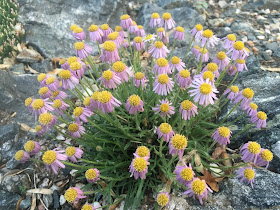
We all dream about having a greenhouse.
But most of us don't.
Because they are a pain in the arse to maintain, expensive, and really expensive to heat and cool.
That sucks.
The average American greenhouse costs four times as much to heat and cool, (per square foot) than a house. -THAN A HOUSE. Do you love paying heating bills as much as I do?
But.
There is an alternative.
I'm dubious of alternatives. There is always some dark side, some sharp pin for every ballon of inflated expectations for some granola-hippy-pseudo-scientific "solution" to lots of things. So I research the crap out of anything before I commit to it...
But.
I'd heard about Passive Solar Greenhouses a bit, and then a friend gave me a book on them.
Full of math, statistics, studies, physics (no metaphysics!) and living examples. A great book.
I'll save you the research. Even though all it did was show me how to build a greenhouse myself, it goes in the short list of books that changed the way I do things forever.
Anyhow. After several visits to
functioning solar greenhouses, a few notebook drawings, a little math, a one-year trial with a little cold frame, and one year later, we built one last fall.

And DAMN it works. I know exactly what it's doing because I'm measuring it closely.

It took a little extra thought to plan and build, and it is paying off already in trouble it doesn't give me. Just for fun, mine has no supplemental heat, just to see what it can do.
Dry statistics:
7 feet x 16 feet = 112 square feet (2m x5m = 10 m2)
About $500 in materials. $250 of that was insulation.
2 weeks of casually building it for half days.
2 layers of thick plastic (about $80 each)
30 degrees Fahrenheit (17C) warmer inside than outside on most coldest nights.
35 minimum, 82 max temp, so far. (1C to 28 C)
40-60F normal temp range.
$0 heating cost.

Critical details:
-Wood framing (because I almost know how to do that)
-Well sealed with weather-stripping.
-Faces South.
-Well insulated north wall, part of roof, and any non-clear surface.
-Foam insulation buried underground between outdoor and indoor dirt.
-Wax-powered vent openers to cool it. (vents equal about 20% of clear surface)
-450 gallons of thermal mass water inside (4 gallons per square foot)
-This design does not employ a ground-to-earth heat exchange. It could be made warmer!
-No electricity or wiring required to operate. None.
-No lock on the door so that a would-be thief finds it easy to discover there are no weed plants in it.
It is ideal for cool-growing plants. It didn't take much dialing-in to make it self-regulate its own temperature. A person could add a little heat to grow warmth-loving things in winter, and surely at great efficiency.
We planted veg seed on thanksgiving. What I've heard and read and experienced about mid-winter day-length had me expect that nothing would actively grow during New Year's day.
I was wrong! We've got lettuce!

It makes me wonder why this isn't standard. This will pay itself off for me in just one winter season. It's freaking magic. It gives me sanity, pleasure, and a place to start early propagation of rock garden plants. It was worth it.
I know that a lot of greenhouse failures come down to inappropriate design for climate, or that owners didn't stick with it just a tad longer to iron out the wrinkles.
In summer, I'll take the door off its hinges and throw a shade-cloth over it if necessary to keep it cooler. I'm fascinated to see it how it operates in summer, when I'll use it to push warm-loving perennial and woody crops like Yucca and Soapberry.
Things I learned I'd share as advice to anyone building one:
-Build it so the inside layer of plastic film is sealed well, if not better than the outside one, because that is the one that will get condensation on it that you don't want to trap next to the wood.
-Build it keeping in mind you want to caulk, strip, or otherwise seal it as airtight as possible. This is why most designs use traditional home building materials: for a good seal.
-If your vents/doors are wood, frame them so temp/humidity don't warp them out of square.
-Shade of a tree is not such a bad thing.
-Leave yourself room to compost in it as passive heat. I watch my outdoor compost steaming and want to capture it for heat in winter!
-Calling before you dig "811" won't help you not cut your own poorly buried electric services!
-It would seem like there is not enough light, but by all observation of plants, there is.
The possibility to use recycled or reclaimed components is endless. I had very little myself. Using Double-pane sliding glass doors would be awesome.
So if you have seriously considered a greenhouse but are a real or frugal human being (or don't want to ironically use lots of fossil fuel to heat your greenhouse), seriously consider a passive solar greenhouse. Well planned, you can harvest the joy of your dreams and not suffer the complications.
Science!

































